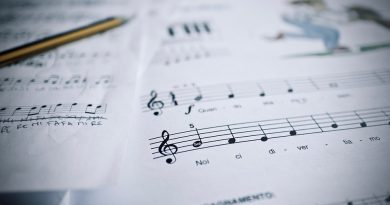Demystifying Music Notation: A Beginner’s Guide to Understanding Guitar Tablature
Demystifying Music Notation: A Beginner’s Guide to Understanding Guitar Tablature
If you are a beginner guitarist looking to learn how to play your favorite songs or write your own music, understanding music notation is essential. While traditional sheet music can be intimidating for beginners, guitar tablature (or tab) offers a more user-friendly way to notate music specifically for guitar. In this guide, we will break down the basics of guitar tablature and show you how to read and interpret it.
What is Guitar Tablature?
Guitar tablature is a system of notation that represents the strings and frets of the guitar. Unlike traditional sheet music, which indicates pitch and rhythm using staff notation, guitar tablature provides a visual representation of where to place your fingers on the fretboard. Each line on the tab represents a string on the guitar, with numbers indicating which fret to press down.
Understanding the Basics of Guitar Tablature
When you look at a piece of guitar tablature, you will see six lines representing the six strings of the guitar. The top line corresponds to the highest-pitched string (usually the highest string on the guitar), while the bottom line represents the lowest-pitched string (usually the lowest string on the guitar). The numbers on the lines indicate which fret to press down on that particular string.
Reading Guitar Tablature
To read guitar tablature, simply look at the number on each line to see which fret to press down on that string. For example, if you see a “3” on the third line, that means to press down on the third fret of the third string. If the number is an “X” or “O”, it indicates that the string should be played open (no fret pressed) or muted, respectively.
Tabs also include other symbols to indicate techniques such as hammer-ons, pull-offs, slides, and bends. These symbols are usually represented by abbreviations or special characters that provide instructions on how to play the notes in a particular way. Understanding these symbols can enhance your playing and help you recreate the original sound of a song.
Practicing with Guitar Tablature
To improve your guitar playing skills using tablature, try practicing with a variety of songs that interest you. Start with simple songs that feature basic chord progressions and melodies to build your confidence and technique. As you become more comfortable with reading and playing tablature, challenge yourself with more complex pieces that incorporate advanced techniques and musical styles.
In addition to practicing with tablature, consider using online resources and guitar apps that provide interactive tabs and play-along features. These tools can help you visualize the music and play along with backing tracks to enhance your learning experience.
Tips for Using Guitar Tablature Effectively
– Pay attention to the rhythm and timing indicated in the tablature to ensure you are playing the notes at the right time.
– Experiment with different fingerings and positions to find the most comfortable and efficient way to play a piece of music.
– Practice regularly and set goals for yourself to track your progress and improve your skills over time.
– Seek guidance from a guitar teacher or experienced guitarist to receive feedback and tips on how to improve your playing technique.
Demystifying Music Notation: A Beginner’s Guide to Understanding Guitar Tablature
In conclusion, guitar tablature is a valuable tool for beginner guitarists to learn and practice music notation in a way that is accessible and easy to understand. By familiarizing yourself with the basics of guitar tablature and practicing regularly, you can develop your playing skills and expand your musical repertoire. Remember to have fun and be patient with yourself as you navigate the world of guitar tablature and explore the endless possibilities of music creation and performance.






